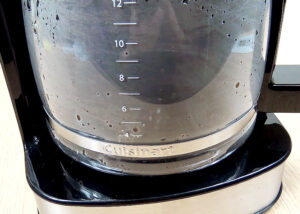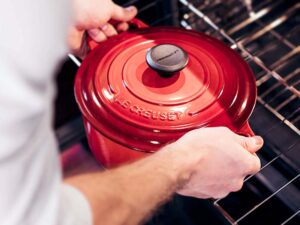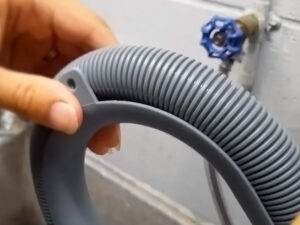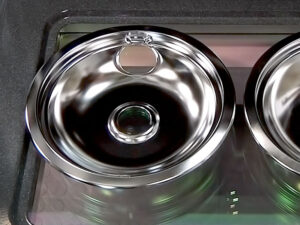Find out how to keep your sink clean and clog-free here. Maintaining a clean kitchen or bathroom requires cleaning the sink overflow hole, something you may not think about. Grime, soap scum, and hair can hide in this hole under or near the faucet, causing foul smells and poor drainage.
It’s easy to clean the overflow hole without special tools or harsh chemicals. We’ll show you how to clean your sink’s overflow hole safely and easily in this article, as well as other alternatives. A little frequent maintenance will keep your sink fresh and clog-free, making your daily routine easier. Start with an easy and effective approach to cleaning the often ignored sink portion.
What is an Overflow Hole in a Sink?
The sink’s overflow hole might be small, but it plays a crucial role. It’s the sink’s safety valve. If you’re filling the sink and forget, it prevents a messy overflow.
This hole is usually near the sink’s top. It connects to a hidden drainpipe. Its purpose is straightforward: when the water level rises too much, it guides the extra water down the drain, not onto your countertop or floor. It’s a sink’s backup plan.
To keep it effective, you must keep this little hole clean. Over time, it can get blocked by soap scum, hair, or gunk, stopping it from doing its job. Regular checks and cleaning are essential. It prevents water damage and keeps your sink working smoothly.
Why is it Important to Clean the Overflow Hole in a Sink?
Cleaning the sink’s overflow hole matters a lot to maintain cleanliness and ensure it works well in your bathroom or kitchen. This tiny hole, found near the top of the sink, plays a vital role in preventing water from spilling over. Yet, it tends to get clogged with all sorts of stuff like soap scum, hair, and toothpaste.
Failing to clean it regularly can lead to some undesirable issues. First, the water might not drain quickly, leaving you with a messy sink – not pleasant at all! Additionally, when the overflow hole gets blocked, it can become quite stinky because trapped debris starts emitting unpleasant odors over time.
Another key reason to keep it clean is to ward off the growth of mold and harmful bacteria. When water and gunk accumulate, they create a damp, dark environment in which these unwanted guests thrive. Nobody wants that in their sink!
So, by giving the overflow hole a good clean, you’ll maintain a fresh sink and avoid those unpleasant smells. To clean it, you can use a toothbrush, some soapy water, or a mixture of baking soda and vinegar. Just be gentle and scrub the hole until it’s spotless.
How to Clean Overflow Hole in Sink
Cleaning the overflow hole in a sink is crucial for keeping things clean and preventing blockages. It’s common for soap residue, dirt, and gunk to build up there. Here’s an easy way to clean it up:
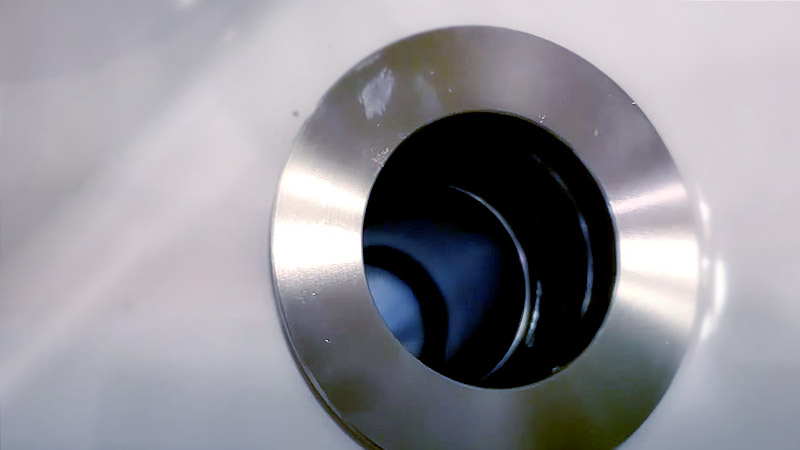
Step 1: Gather Your Supplies
- Rubber gloves
- An old toothbrush or a small cleaning brush
- Baking soda
- Vinegar
- A plastic putty knife (optional)
Step 2: Safeguard
Cleaning your sink’s overflow hole requires clean, safe hands. You don’t want yuck on your skin. So use rubber gloves. These gloves prevent dirt from getting on your hands and make cleaning more hygienic.
Step 3: Remove Any Drain Stoppers
Make room for the overflow hole. If your sink has a drain stopper, say goodbye for now. This stopper hinders cleaning. Removing it improves overflow hole access.
How to remove it depends on the stopper. Some feature a knob to twist or pull, while others need unscrewing. A lever-squeezable pop-up stopper is another option. Be kind and patient. Once out, put it somewhere safe to return it later.
Step 4: Make a Cleaning Solution
Make a simple cleaning potion. Baking soda is probably in your kitchen. Mix a little baking soda with water to produce a paste. This paste erases overflow hole muck like magic.
Cleaning with baking soda is safe and effective. This work doesn’t require fancy chemicals. You can use your favorite bathroom cleaner, but baking soda is a reliable cleanser.
Step 5: Clean with the Solution
Your baking soda paste is ready. Dip an old toothbrush or small cleaning brush into this paste. Make that baking soda mix gooey. Scrub the overflow hole inside now. Get in there and scrub. Reach every crevice. That dirt can’t defeat your baking soda scrub.
This is the real cleaning stage. Imagine pampering your sink’s overflow hole. Scrub until clean. The mess-cleaning power of baking soda will astound you.
Step 6: Vinegar
Time for vinegar magic. Vinegar, used in salads, is also a great cleaner. Pour some vinegar into the overflow opening. A little is plenty.
The vinegar and baking soda paste from the previous step fizz together. This effervescent reaction loosens leftover muck. It’s like they’re working together. Give them a few minutes.
Step 7: Scrub Again
After the vinegar and baking soda bubble, scrub again. Return with your trusted toothbrush or cleaning brush. Remove loose filth and dirt. Things are getting easier. Like Gunk says, “I give up!”
Scrub until the overflow hole is clean. If any stubborn portions remain, we’ll address them next.
Step 8: Rinse
Rinse the overflow hole. Warm water helps here. Pour warm water directly into the hole from a basin or cup. If your sink is structured that way, turning on the faucet will clean the overflow hole.
Rinse it thoroughly to remove all vinegar and baking soda. It should be fresh. This step showers the overflow hole to remove cleaning products.
Step 9: Clog Check
Despite scrubbing and cleaning, tough items can get lodged in the overflow hole. Do you want no clogs? Examine the hole to confirm. No worries if certain bits refuse to go away.
Use a plastic putty knife or straightened paperclip to gently remove these obstinate particles. Avoid scratching the sink. A slight nudge should work.
Step 10: Reassemble Sink
Great job! The overflow hole is bright after cleaning. Reassemble everything now. Reattach the drain stopper to the sink if you removed it in Step 3. Check it for cleanliness before reinstalling. The way each sink stopper fits back may vary, so be careful.
After cleaning the overflow hole and reassembling your sink, it will drain water well. After a great clean, your sink will perform wonderfully.
Are there any Alternative Methods to Clean the Overflow Hole in the Sink
Yes, there are other sink overflow hole cleaning options. The procedure in the previous steps works and employs common home objects, but here are two others:
1. Use Commercial Drain Cleaners
Use bathroom sink-specific commercial drain cleaners for a simple solution. Clogs and filth are effectively removed by these products. They are usually liquid or gel. Follow the bottle instructions to use.
Pour the cleanser directly into the overflow hole and let it break up any muck or obstructions in the drain. Flushing the sink with hot water after the time stated on the label helps wash away dissolved material.
Read and obey product safety instructions. Wear gloves, avoid skin and eye contact, and ventilate. Commercial drain cleaners are potent, so use them carefully if you’ve used other cleansers in the sink.
2. Plumbing Snake Or Zip-It
If other approaches have failed, a plumbing snake or Zip-It tool can unclog the overflow hole. These instruments reach deep into plumbing to remove tough obstructions.
A plumbing snake should be cautiously inserted into the overflow hole and gently turned or pushed down the drain. Turn or rotate it to break up particles at the barrier. Take the snake out and it should be covered with the muck you removed.
A Zip-It tool is cheap and straightforward. Insert it into the overflow hole and pull it out without difficulty using the tool’s tiny hooks to grab hair and other debris.
While more laborious, these tools can be incredibly useful when other ways fail.
3. Baking Soda And Hydrogen Peroxide
Hydrogen peroxide and baking soda can be used to make a natural cleaning solution. This procedure breaks down overflow hole muck and odors.
Mix a little baking soda with hydrogen peroxide to make a paste. It should feel like toothpaste. Put this paste inside the overflow hole and wait 15–30 minutes. The mixture has time to work on the accumulation.
Scrub the overflow hole with a brush or old toothbrush after waiting. Baking soda abrades debris, while hydrogen peroxide breaks it down. Finally, rinse well with warm water to remove the filth.
This procedure is safer and more eco-friendly than certain commercial cleansers and can be equally effective over time.
4. Water Boiling
One of the easiest ways to clean the overflow hole is with boiling water. Consider it a warm bath for your sink. Do it this way:
Kettle or pot water to boil. Carefully pour boiling water into the overflow opening. Water heat dissolves soap scum and other drain buildup. This works well for minor obstructions and routine maintenance.
Repeat this process several times, letting the hot water sit in the overflow hole for a minute or two. Rinse with warm water. This procedure is simple, safe, and effective for sink cleaning.
5. Hot Water And Dish Soap
Another simple overflow hole cleaner is dish soap. How it works:
Add a few drops of liquid dish soap to boiling water. The soapy mixture dissolves soap scum and grease. Put this soapy solution in the overflow hole. Let it sit so it can be cleaned.
Scrub the overflow hole with a brush or cloth after waiting. The soapy solution and scrubbing will remove the filth. Once satisfied, thoroughly rinse the sink with warm water.
This mild but effective sink cleaning procedure is safe for the environment and plumbing.
6. Enzyme-Based Drain Cleaners
Natural cleaning superheroes are enzyme-based drain cleaners. Naturally occurring enzymes attack hair and soap scum. They’re eco-friendly and pipe-friendly. How to use:
Application instructions are on the product. The enzyme-based cleanser is usually poured into the overflow hole. Allow it to rest. Enzymes break down dirt into liquid, making it easier to wash away.
This procedure is eco-friendly and plumbing-friendly. Regularly using enzyme-based cleaners to avoid clogs and clean sinks is safe. Follow the product’s instructions for optimal results.
Three more easy and effective ways to clean your sink’s overflow hole. Using boiling water, dish soap, or enzyme-based cleaners, you can clean your sink using everyday products you presumably already have.
How Often Should I Clean the Overflow Hole in My Sink?
You may wonder how often to clean your sink overflow hole. It should be checked and cleaned every month or two. Clean it regularly to avoid issues. Maybe check your sink once a month if you use it often, like in a busy kitchen or bathroom.
The overflow hole can slowly fill with soap, hair, and toothpaste. If you don’t clean it right away, these things can block the hole, making the sink dirty and smelly. Nobody wants that!
Cleaning the overflow hole is quick and simple. Use a toothbrush or small brush to gently scrub the gunk. Alternatively, baking soda and vinegar can break down buildup.
The simple rule is to check and clean your sink’s overflow hole monthly. This simple task can keep your sink running smoothly and smelling fresh. Just add it to your monthly to-do list and you’re good!
FAQs
Can bleach clean the sink overflow hole?
Although bleach disinfects and whitens surfaces, it’s not advised for overflow hole cleaning. A powerful chemical, bleach can damage plumbing and the environment. Cleaning the overflow hole with baking soda and vinegar or enzyme-based cleaners is safer and more environmentally friendly.
Is it required to clean my sink overflow hole regularly?
To avoid clogs and maintain hygiene, you must clean your sink overflow hole regularly. Soap scum, debris, and mold can build up here, causing odors and clogs. By cleaning overflow holes regularly, you can avoid bigger problems.
Can I clean the overflow opening with a wire or metal brush?
Cleaning the overflow opening using wire or metal brushes is not advised. Abrasive tools can scrape your sink, exposing it to stains and damage. To protect your sink, use toothbrushes or non-abrasive cleaners.
Is pouring hot water into the overflow hole safe?
Hot water can avoid small jams and clean the overflow hole safely. With a ceramic sink, abrupt temperature swings can break the porcelain. Avoid pouring boiling water into a chilly sink and use hot water instead.
Are the overflow hole covers removable when cleaning?
Since it allows better access to the overflow hole, removing it can improve cleaning. Consider removing your sink cover before cleaning. Cleaning the cover and surrounding region is important since they can accumulate filth.
Can the overflow hole be vacuumed?
A vacuum cleaner with a tiny attachment can help clean the overflow hole. However, it doesn’t replace a full cleaning. Before cleaning with baking soda and vinegar, vacuuming helps remove surface dirt and hair.
Is there an overflow hole cleaning schedule?
The frequency of overflow hole cleaning depends on sink usage and personal taste. Most families benefit from monthly deep cleaning. If your sink is heavily used, smells, or drains slowly, you may want to clean it more often.
Clean the overflow opening before or after draining?
We recommend cleaning the overflow opening before the drain. Starting at the overflow hole prevents dirt from becoming caught in the drain while cleaning. This order ensures thorough and efficient cleaning.
Can a hair strainer prevent overflow hole clogs?
To prevent overflow and main drain obstructions, use a hair strainer or sink drain filter. These devices avoid clogs and reduce cleaning by capturing hair and debris before they go down the drain.
Can I prevent overflow hole odors?
Regular cleaning is the best way to prevent overflow hole odors. You can also pour baking soda and vinegar or a light disinfectant down the overflow hole to remove odors. Keep the sink clean and dry when not in use to avoid odors.
Final Words
You may now easily clean your sink’s overflow hole. You can keep your sink clean and prevent clogs by following simple procedures and researching alternatives. Odors and drainage concerns can be avoided with regular maintenance.
Remember that baking soda, vinegar, and dish soap work well. These methods are eco-friendly and safer than chemicals. For difficult clogs, a plumbing snake or Zip-It tool might be invaluable.
Always take safety precautions when using natural or commercial cleaners. To keep your sink clean and unclogged, follow a cleaning schedule that fits your usage.
These simple steps will keep your sink’s overflow hole clean and tidy, making your kitchen or bathroom routines easier.


